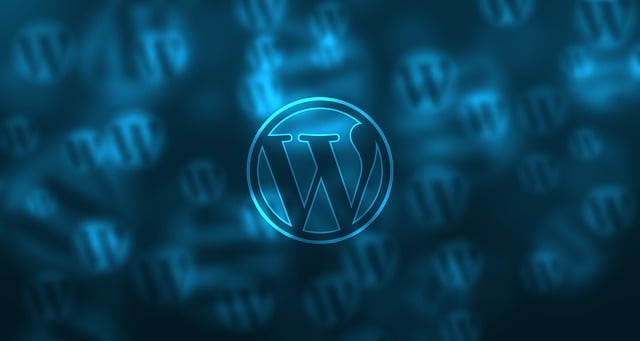Regular updates for WordPress Design are essential for security, performance, and compatibility. Backups safeguard data and ensure swift recovery. Optimizing speed enhances user experience and SEO rankings. UX trends focus on minimalism, mobile responsiveness, and interactive layouts. SEO best practices improve online visibility. Content strategy drives engagement and keeps the site relevant. Security measures protect sensitive data. Consistent maintenance prevents common issues for a reliable WordPress Design.
Maintaining a WordPress website isn’t just about creating stunning content; it’s crucial for security, performance, and user experience. This comprehensive guide navigates the essential aspects of WordPress website maintenance. From regular updates that keep your site secure to optimization techniques for lightning-fast speeds and SEO best practices, we cover it all. Dive into strategies for backing up data, enhancing user experience through modern design trends, and implementing robust security measures to protect your WordPress site.
Regular Updates: Keeping WordPress Secure

Regular updates are a crucial aspect of maintaining a secure and functional WordPress website. With each update, developers patch security vulnerabilities, fix bugs, and enhance core functionalities, ensuring your site remains robust against potential threats. Keeping WordPress up-to-date is essential for several reasons; it protects sensitive user data by mitigating known security risks, improves overall performance, and maintains compatibility with the latest plugins and themes.
Security updates are particularly vital as hackers constantly exploit known vulnerabilities in outdated software. By staying current with WordPress releases, you fortify your site against common attack vectors, safeguarding both your content and visitors’ information. Regular updates also facilitate seamless integration with new features, allowing for a dynamic and engaging user experience, which is key to any successful WordPress Design.
Core, Themes, Plugins: What Needs Updating?

WordPress websites require regular updates to maintain optimal performance and security. When it comes to WordPress design, updating core files, themes, and plugins is essential. The core of WordPress refers to its fundamental code, which includes the basic functionality and features of your site. Keeping the core updated ensures compatibility with new features, improved stability, and patched security vulnerabilities.
Themes and plugins are external components that enhance the functionality and aesthetics of your WordPress design. Regularly updating these elements is crucial for bug fixes, performance improvements, and access to the latest design trends. Outdated themes and plugins can leave your site vulnerable to attacks, so it’s important to check for updates frequently and install them promptly when available.
Backup Strategies for Your Website Safety

Regular backups are an integral part of any WordPress design maintenance strategy. They safeguard your website against data loss, providing a safety net if something goes wrong. By implementing robust backup strategies, you ensure that your site’s content, themes, and plugins can be easily restored in the event of technical glitches, hacking attempts, or human error.
There are various backup solutions available for WordPress users, ranging from built-in features to third-party plugins. These tools allow automatic backups at set intervals, keeping your website’s history intact. Having multiple backup copies stored securely enables you to quickly recover your site without losing valuable data, ensuring a seamless user experience and maintaining the integrity of your WordPress design.
Optimizing Performance: Speed Test and Tools

Optimizing performance is a crucial aspect of maintaining a dynamic WordPress website. One effective strategy is conducting regular speed tests using tools like Google PageSpeed Insights, GTmetrix, or WP Rocket. These tools provide detailed insights into your site’s loading times and offer recommendations for improvements. For instance, they can suggest optimizing images, leveraging browser caching, minifying CSS and JavaScript files, or implementing a content delivery network (CDN).
By implementing these suggestions, you can significantly enhance your WordPress design’s speed and overall user experience. Faster load times not only improve search engine rankings but also keep visitors engaged, reducing bounce rates. Regular performance checks and optimizations ensure your website remains efficient, secure, and aligned with modern web standards.
User Experience: Design Trends in WordPress

The user experience (UX) is a critical aspect of any website, and WordPress, as a popular content management system, has evolved to meet modern design trends. In recent years, WordPress Design has embraced minimalism, clean layouts, and intuitive navigation, ensuring sites are not only visually appealing but also easy to use. This shift towards simplicity is driven by user preferences for fast, efficient websites that deliver content promptly.
Trends in WordPress Design focus on creating responsive, mobile-friendly interfaces that adapt seamlessly across various devices. The use of high-quality visuals, including images and videos, combined with ample white space, enhances readability and makes sites more engaging. Additionally, dynamic layouts and interactive elements improve user interaction, encouraging visitors to explore different sections, fostering a more immersive experience.
SEO Best Practices for WordPress Sites

Search Engine Optimization (SEO) plays a pivotal role in enhancing the visibility and performance of WordPress websites. A well-optimized site not only attracts organic traffic but also ensures a better user experience, leading to higher engagement rates. For WordPress sites, adhering to best practices such as utilizing relevant keywords naturally within content, optimizing meta titles and descriptions, and implementing structured data markup can significantly boost SEO efforts. Regular updates of themes, plugins, and core software are also crucial, not just for security patches but also for compatibility with the latest SEO standards.
WordPress Design contributes heavily to SEO effectiveness. A clean, responsive, and mobile-friendly design not only provides an exceptional user interface but also facilitates faster loading times, which is a key factor in both user satisfaction and search engine rankings. Additionally, incorporating high-quality visuals with alt tags and ensuring proper internal linking structures can further enhance the site’s SEO potential. Regular content updates that are informative, engaging, and tailored to target audiences are also essential for maintaining and improving search engine positions.
Effective Content Strategy for Regular Maintenance

A robust content strategy is the cornerstone of effective WordPress website maintenance. Regular updates, fresh content, and strategic keyword optimization are key components that contribute to a site’s success and longevity. By integrating SEO best practices into your content strategy, such as conducting thorough keyword research and incorporating relevant keywords naturally throughout your posts, pages, and media, you enhance your site’s visibility in search engine results.
Moreover, a diverse content portfolio caters to different user preferences, encouraging engagement and prolonging visitor durations. This not only bolsters your site’s authority within its niche but also facilitates continuous learning and adaptation, aligning with the dynamic nature of WordPress Design and keeping your website ahead of evolving trends and user expectations.
Security Measures to Protect Your Site

Maintaining a secure WordPress site is paramount, especially considering the vast amount of data it holds. Implementing robust security measures acts as a robust shield against potential threats. Start by keeping your WordPress core, themes, and plugins up to date, as developers frequently release patches addressing known vulnerabilities. Strong passwords are also non-negotiable; opt for unique, complex combinations that incorporate numbers and special characters.
Consider using two-factor authentication (2FA) for added protection. Regular security scans can help identify potential risks and malicious activities. Additionally, employing a reputable web application firewall (WAF) enhances your site’s defenses by filtering traffic and blocking common attack vectors. Remember that a secure WordPress design is not just about locking down the site; it’s about ensuring user trust and data integrity.
Monitoring and Troubleshooting Common Issues

Maintaining a WordPress website involves constant monitoring and troubleshooting to ensure it runs smoothly and securely. Regular checks for updates, both in WordPress core, themes, and plugins, are essential to patching security vulnerabilities and improving performance. A well-maintained site is better equipped to handle common issues like broken links, 404 errors, and slow loading times, which can significantly impact user experience and search engine rankings.
Troubleshooting should be a proactive process. Using WordPress tools like the built-in debugging features and analytics platforms can help identify problems early on. Additionally, monitoring server logs and keeping an eye out for unusual activity can prevent potential security breaches. By addressing these common issues promptly, website owners can ensure their WordPress Design remains reliable, secure, and optimized for user engagement.
